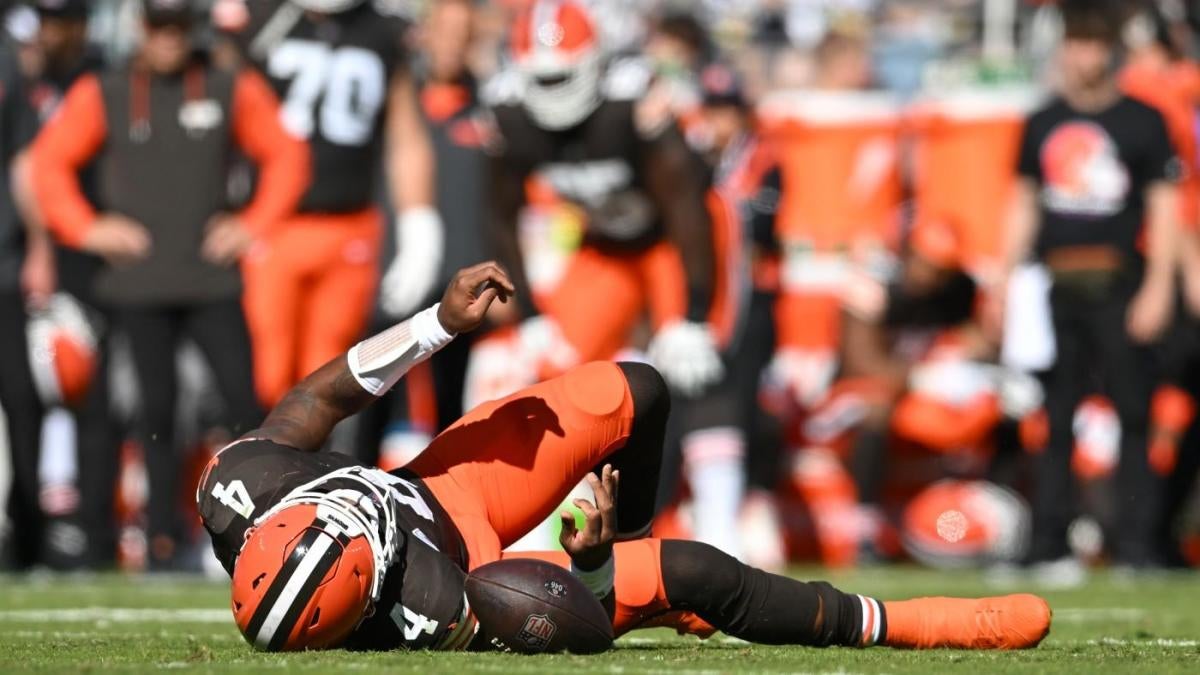Injuries are inevitable in a collision sport, like football. NFL teams are increasingly trying to mitigate this risk through the purchase of insurance policies on NFL player contracts as salaries continue to grow.
The 2006 NFL Collective Bargaining Agreement first introduced the concept that teams could get salary cap credits for receiving insurance payments when players are injured. The most crucial requirement is the amount covered by the policy must be specified in the player contract. The credit is given to the team’s salary cap in the following league year. The salary cap relief provided is considered as a “refund from the player” under the CBA.
It took a while for teams to start taking advantage of this CBA provision. The addendum to the six-year contract extension averaging $16.25 million per year Eli Manning signed in 2009, making him the NFL’s highest-paid player, had a clause recognizing that the New York Giants had an insurable interest in him. There wasn’t any mention of an insurance amount in the addendum.
The earliest instance I could find of a team satisfying the requirements to qualify for a cap credit with an injury was with the five-year extension averaging $22 million per year Aaron Rodgers received in 2013 from the Green Bay Packers to sit atop the league’s salary hierarchy. The Packers insured $20 million of Rodgers’ then-NFL-record $35 million signing bonus.
Inclusion of the appropriate language in player contracts started becoming more commonplace once the $25 million-per-year mark was passed by Matthew Stafford in 2017. The Detroit Lions insured $40 million of Stafford’s five-year, $135 million extension averaging $27 million per year.
Currently, there are 13 players, all quarterbacks, with contracts averaging $45 million per year or more in the NFL. The only contract without any insurance is the four-year, $212 million extension averaging $53 million per year Jared Goff signed with the Lions in May. Teams generally insure some portion of money in the contract that is fully guaranteed at signing. The largest amount to date has been $111,999,994 of the unprecedented fully guaranteed five-year, $230 million contract Deshaun Watson received as a part of the trade from the Houston Texans to the Cleveland Browns in March 2022. The next is the $87.1 million in the four-year extension Dak Prescott signed in September making him the NFL’s first $60 million-per-year player. Prescott’s $240 million extension has $129 million fully guaranteed.
Defensive tackle Chris Jones is the lone exception among the league’s five-highest-paid non-quarterbacks as the Kansas City Chiefs didn’t insure any of his contract. The Dallas Cowboys, Minnesota Vikings, San Francisco 49ers and Philadelphia Eagles insured $60 million, $40.8 million, $30 million and $29,841,630 for the respective contracts of wide receiver CeeDee Lamb, wide receiver Justin Jefferson, edge rusher Nick Bosa and wide receiver A.J. Brown’s at signing.
The season-ending ruptured right Achilles Watson suffered in Week 7’s contest against the Cincinnati Bengals has made the insurance issue relevant. Watson has been a major disappointment ever since he was acquired.


The insurance language in Watson’s original Browns contract, which is consistent with other player contracts around the league, reads as follows:
Club, in its sole discretion, shall be entitled to purchase a policy, or policies, of insurance naming Club as beneficiary and insuring up to $111,999,994 of the specific type of salary being insured, as detailed below, in the event player is unable to perform the services required by his NFL player contract due to an NFL football-related or non-football related injury or death resulting therefrom, as set forth under the terms and conditions of such policy or policies. It is agreed and understood that such policy, or policies, are available for inspection upon request by the NFL and/or the NFLPA.
With respect to an injury occurring from date of contract signing to the beginning of the team’s first day of the official 2023 nine-week offseason workout program, or May 1, 2023 — whichever is soonest ($111,999,994):
- $19,175,003 of the player’s $45,000,000 2022 signing bonus
- $44,274,997 of the player’s $46,000,000 2023 paragraph 5
- $24,274,997 of the player’s $46,000,000 2024 paragraph 5
- $24,274,997 of the player’s $46,000,000 2025 paragraph 5
With respect to an injury occurring from the beginning of the team’s first day of the official 2023 nine-week offseason workout program, or May 1, 2023 — whichever is soonest — to the beginning of the team’s first day of the official 2024 nine-week offseason workout program, or May 1, 2024 — whichever is soonest ($82,451,463):
- $13,901,469 of the player’s $46,000,000 2023 paragraph 5
- $44,274,997 of the player’s $46,000,000 2024 paragraph 5
- $24,274,997 of the player’s $46,000,000 2025 paragraph 5
With respect to an injury occurring from the beginning of the team’s first day of the official 2024 nine-week offseason workout program, or May 1, 2024 — whichever is soonest — to the beginning of the team’s first day of the official 2025 nine-week offseason workout program, or May 1, 2025 — whichever is soonest ($58,176,466):
- $13,901,469 of the player’s $46,000,000 2024 paragraph 5
- $44,274,997 of the player’s $46,000,000 2025 paragraph 5
With respect to an injury occurring from the beginning of the team’s first day of the official 2025 nine-week offseason workout program, or May 1, 2025 — whichever is soonest — to Jan. 15, 2026 or the end of the team’s last official 2025 regular season game, whichever is soonest ($33,901,469):
- $33,901,469 of the player’s $46,000,000 2025 paragraph 5
Player shall cooperate with club with respect to applying for and underwriting such policy or policies of insurance including, if requested by the insurer(s), submitting to independent medical examinations. The insurer(s) shall be selected by club and club shall, in its sole discretion, be entitled to procure substitute policies or replacement policies from time to time in the amount set forth above. club will reimburse Player for any reasonable out-of-pocket expenses associated with procuring the insurance.
Please check the opt-in box to acknowledge that you would like to subscribe.
Thanks for signing up!
Keep an eye on your inbox.
Sorry!
There was an error processing your subscription.
The amount insured decreases as Watson’s contract progresses. The contract restructure that took place in August to create 2024 cap space didn’t change the remaining insured amounts. The 2024 salary components being insured were modified. The $13,901,469 now consists of $12,691,469 of the $44.79 million that was converted into signing bonus and Watson’s $1.21 million base salary.
Watson’s injury prompted speculation that the Browns will be getting significant cap relief because of his injury. The actual amount ultimately granted will likely be disappointing to Browns fans.
Based on a conversation with a former front office executive who managed his team’s salary cap, the insurance policies require a certain amount of games to be missed before there’s a payout. The payment starts occurring for each game missed after the games threshold or deductible has been met. He mentioned six missed games as being a threshold that has been used in policies.
Achilles injuries like Watson’s aren’t considered career threatening. Running back Cam Akers tore his right Achilles in 2021 during a workout shortly before Los Angeles Rams opened training camp. He was back on the field for the regular season finale a little more than five months after the injury. Akers was the Rams’ primary ball-carrier during a playoff run that culminated in a Super Bowl LVI victory.
Atlanta Falcons quarterback Kirk Cousins is probably more indicative of Watson’s recovery timetable. Cousins tore his right Achilles in the Vikings’ Week 8 game last season. He was the Falcons’ opening game starting quarterback this season. Barring any rehab setbacks or surgery complications, Watson should be recovered by the start of the 2025 regular season next September. The Browns surely wouldn’t mind if Watson erred on the side of caution with his rehab timetable given his poor play.
Watson was limited to six games in 2023 because of a fracture to the glenoid bone in his throwing (right) shoulder. The $13,901,469 of Watson’s 2023 compensation that was insured, which is the same amount for 2024, has resulted in the Browns getting a $202,322 cap credit this year, according to NFLPA data. The $8.993 million of 2024 bonus proration from Watson’s original $44.965 million signing has dropped to $8,790,678. Watson played in Cleveland first seven games this season before getting hurt. Given the expected rehab timetable, a similar amount of cap relief could be in order.
As another reference point, $80 million of the five-year, $230.5 million extension (worth up to $238 million through salary escalators) averaging $46.1 million per year that Kyler Murray received from the Arizona Cardinals in July 2022 was initially insured. There was $103.3 million fully guaranteed at signing. More specifically, $24 million of Murray’s $29.035 million signing bonus, his $965,000 2023 base salary, $36 million option bonus, $2 million 2023 base salary and $17.035 million of his $37 million 2024 base salary were insured with an injury prior to the start of the 2023 offseason workout program.
The right ACL Kyler Murray tore kept him out of the last four games of the 2022 season and the first nine contests in 2023. Murray also missed two other games in 2022 because of a hamstring injury. The Cardinals have gotten a $2,288,823 2024 cap credit relating to Murray’s missed 15 games over the 2022 and 2023 seasons. Murray’s $5.807 million of 2024 signing bonus proration has been reduced to $3,518,177.
The Cincinnati Bengals received $163,870 of 2024 cap relief because Joe Burrow missed the last seven games in 2023 with a right wrist injury that required surgery. $59.5 million of the five-year, $275 million extension Burrow signed that September, making him the NFL’s first $55 million-per-year player, was insured. Out of the $59.5 million, $14.875 million was attributed to 2023 salary components.
A prime example of cap relief from a devastating injury is former Washington Commanders quarterback Alex Smith. The Commanders insured $12 million of the $27 million signing bonus in the four-year, $92 million extension Smith received in 2018 after his trade from the Chiefs. Unfortunately, Smith suffered a gruesome right leg fracture 10 games into the 2018 season that was believed to be career ending. After missing the entire 2019 season, Smith was cleared to return to play football after a 22-game absence. Smith was inactive for the first four weeks of the 2020 season before seeing action in Washington’s fifth game.
Washington got a $4 million cap break from Smith’s injury as a signing bonus proration reduction spread over the last four years of the contract (2019 through 2022). Presumably, the cap relief would have much greater if more of Smith’s contract had been insured.

